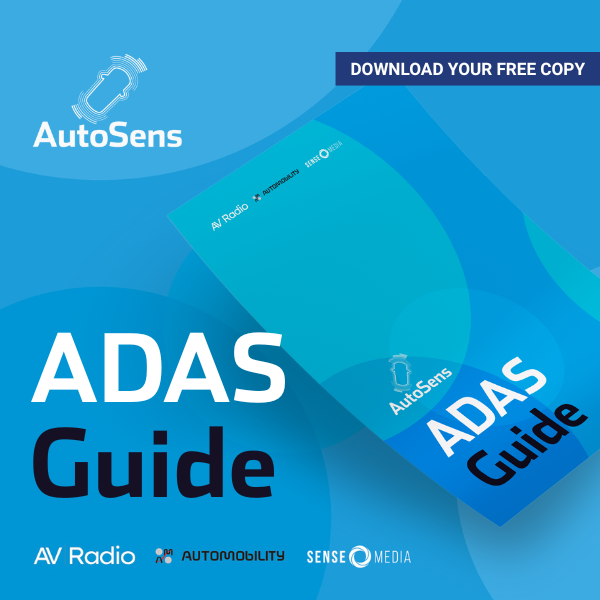Written by:
Pavan Vemuri
Director of Product Engineering
SDVerse LLC
Introduction
The autonomous vehicle industry faces a critical challenge in perception systems: ensuring robust and reliable operation even when sensor data is incomplete or degraded. Environmental factors like adverse weather conditions, sensor failures, or occlusions can lead to missing or corrupted data from critical sensors. These incomplete data situations pose significant safety risks and present a major hurdle for autonomous driving systems that rely on comprehensive environmental awareness.
Recent advances in generative artificial intelligence offer a potential solution to this challenge. Generative models—particularly GANs (Generative Adversarial Networks) and diffusion models—show capabilities in filling missing sensor data by inferring what information should be present based on patterns learned from complete datasets and other available sensors.
This cross-modal data completion represents a potential advancement in creating more resilient autonomous perception systems.
This article explores how generative AI models can enhance sensor fusion systems by completing missing data across different sensing modalities, the technical approaches enabling this capability, and the implications—both positive and negative—for autonomous vehicle safety and reliability.
The Challenge of Incomplete Sensor Data
Autonomous vehicles typically employ multiple sensing modalities—cameras, LiDAR, radar, and ultrasonic sensors—each with unique strengths and limitations:
Cameras provide rich visual information but struggle in poor lighting and adverse weather.
LiDAR offers precise 3D mapping but can be affected by precipitation and has limited range.
Radar performs well in various weather conditions but provides lower resolution.
Ultrasonic sensors excel at close-range detection but have minimal range and precision.
In real-world operation, scenarios frequently arise where one or more sensors cannot provide reliable data:
Heavy rain or fog degrading camera and LiDAR performance
Direct sunlight causing camera washout
Snow or mud covering sensors
Hardware failures in individual sensors
Physical occlusions blocking sensor views
Traditional sensor fusion approaches typically handle missing data through conservative fail-safe mechanisms, such as reducing vehicle speed or transferring control to the human driver. While prioritizing safety, these approaches significantly limit autonomous operation in challenging conditions—precisely when driver assistance is most valuable.
Generative AI Approaches to Sensor Data Completion
Generative AI models offer a more sophisticated approach by learning the correlations between different sensor modalities and using available data to reconstruct missing information. Several generative architectures have shown potential in this domain:
Generative Adversarial Networks (GANs)
GANs have shown promise in sensor fusion applications through their competitive training process:
A generator network learns to create synthetic sensor data that aims to match the distribution of real sensor readings.
A discriminator network attempts to distinguish between real and synthetic sensor data.
Through adversarial training, the generator becomes increasingly adept at producing realistic sensor data.
Research published in ScienceDirect demonstrates how automotive radar and camera fusion using GANs can enable perception even when one sensor modality is compromised. The GAN architecture “converts the radar sensor data to artificial, camera-like, environmental images” through an unsupervised learning process, effectively translating between sensing modalities.
Conditional Multi-Generator Adversarial Networks
An advanced GAN variation called Conditional Multi-Generator Generative Adversarial Networks (CMGGANs) has shown potential effectiveness for automotive applications. These models are conditioned on available sensor data (like radar) and can generate representations of what missing sensor data (like camera images) might show. This approach allows for feature-fusion and semantic-fusion across sensing modalities, potentially enabling the system to maintain a more coherent understanding of the environment even with partial sensor information.
Diffusion Models
Diffusion models represent another approach for sensor data completion. Unlike GANs, diffusion models:
Add noise to data samples through a forward process.
Learn to reverse this process, gradually removing noise to generate new data.
Can be conditioned on partial observations to complete missing data.
According to reviews in academic literature, diffusion models can produce more stable outputs than GANs for certain data reconstruction tasks. This stability makes them potentially suitable for applications like autonomous driving. Recent implementations suggest that diffusion models can handle uncertainty in sensor data completion by generating multiple possible reconstructions, allowing downstream systems to account for a range of possibilities.
Performance Metrics and Validation
Evaluating generative models for sensor data completion requires specialized metrics that go beyond traditional generative model assessments:
Reconstruction Accuracy
Mean Squared Error (MSE) between generated and ground truth sensor data
Structural Similarity Index (SSIM) for image-based sensors
Earth Mover’s Distance for point cloud reconstructions
Feature-level similarity metrics that capture semantic correctness
Downstream Task Performance
Object detection accuracy using completed sensor data
Segmentation quality with reconstructed inputs
Tracking consistency across sensor failures
End-to-end driving performance in simulation with generated data
Safety and Reliability Metrics
False positive/negative rates for critical object detection
Confidence calibration with reconstruction uncertainty
Performance degradation curves across varying levels of sensor loss
Robustness to adversarial or out-of-distribution inputs
Comprehensive validation requires testing across diverse scenarios, including edge cases that specifically challenge the generative reconstruction capabilities.
Benefits of Generative Sensor Fusion
Generative approaches to sensor fusion offer several potential advantages:
Enhanced Resilience to Sensor Failures
By learning correlations between sensor modalities, generative models can help autonomous systems maintain operation even when individual sensors fail or degrade. This provides a form of software-based redundancy that complements hardware solutions.
Expanded Operational Domain
Vehicles equipped with generative sensor fusion may operate in a wider range of environmental conditions that would otherwise compromise traditional perception systems. This expanded operational envelope could increase the utility of autonomous vehicles in challenging environments.
Reduced Hardware Redundancy
Instead of requiring extensive physical sensor redundancy, generative approaches potentially allow for more efficient sensor configurations while maintaining reliability through software. This could reduce vehicle cost and complexity.
Improved Data Quality
Beyond merely filling missing data, generative models can potentially enhance sensor data quality by reducing noise and improving resolution in functioning but degraded sensors. This data enhancement could improve overall perception system performance.
Limitations and Concerns
Despite the potential benefits, generative sensor fusion faces significant challenges and limitations:
Hallucinatory Reconstructions
Perhaps the most serious concern is that generative models might “hallucinate” features that do not exist in reality. Unlike humans, who are aware when they do not know, generative models may confidently produce plausible but incorrect reconstructions that could lead to dangerous driving decisions.
Domain Shift Vulnerability
Generative models trained on specific data distributions may fail when encountering novel environments or conditions that differ significantly from their training data. This ‘domain shift vulnerability’ can lead to unexpected and potentially unsafe behavior in the real world, highlighting the need for robust and adaptable generative models for sensor fusion.
Computational Demands
The computational requirements of generative models present significant challenges for deployment on vehicles with limited processing power and energy constraints. Real-time performance is essential for autonomous driving applications.
Verification Challenges
Traditional verification and validation methods struggle with deep learning systems, and generative models introduce additional complexity that makes safety certification particularly challenging. Proving that a generative model will behave safely in all conditions may be fundamentally difficult.
Ethical and Legal Implications
When accidents occur, determining responsibility becomes more complex when decisions were based partly on AI-generated sensor data rather than direct measurements. This complicates insurance, liability, and regulatory frameworks
Future Directions
For generative sensor fusion to realize its potential while addressing limitations, several areas require further advancement:
Computational Efficiency
Generative models, particularly diffusion models, can be computationally intensive. For autonomous vehicles with limited onboard computing resources, optimizations are essential:
Model distillation to create smaller, faster networks
Hardware acceleration using specialized processors
Edge-optimized architectures that balance accuracy and efficiency
Selective application based on detected sensor anomalies
Verification and Validation
Safety-critical systems require rigorous verification that the generated data remains reliable:
Formal verification methods for generative models
Adversarial testing to identify failure modes
Real-world validation across diverse environments
Certification approaches for AI components in autonomous systems
Integration with Classical Methods
The most robust approaches will likely combine generative techniques with classical sensor fusion methods:
Kalman filters augmented with generative components
Physics-based models that constrain generative outputs
Hybrid architectures that leverage both classical and deep learning approaches
Fallback mechanisms that ensure safe operation when generative models reach their limitations
Uncertainty-Aware Planning
Developing decision-making systems that appropriately incorporate the uncertainty in generative reconstructions:
Probabilistic planning frameworks that account for multiple possible reconstructions
Risk-aware trajectory planning that considers reconstruction confidence
Explicit safety boundaries based on sensor reliability estimates
Conclusion
Generative AI models represent a promising advancement in addressing the challenge of incomplete sensor data in autonomous vehicle perception. By learning correlations between different sensing modalities, these models may help fill in missing information, potentially creating more robust perception systems.
This approach undeniably comes with significant limitations and risks that must be addressed with utmost care. The tendency of generative models to generate plausible but potentially inaccurate data poses serious safety concerns that cannot be ignored. These concerns can only be addressed through rigorous testing, transparent uncertainty quantification, and appropriate integration with traditional redundancy-based safety mechanisms.
As the technology matures, generative sensor fusion will likely find its place as one component in a comprehensive autonomous vehicle architecture—not as a complete solution to sensor reliability, but as a carefully bounded capability that enhances perception in specific, well-characterized conditions.
For researchers and engineers in the autonomous vehicle field, generative approaches to sensor fusion offer an interesting direction that complements traditional solutions. By acknowledging the potential and limitations of these techniques, the industry can create more thoughtful approaches to autonomous vehicle perception that prioritize safety while gradually expanding operational capabilities.
Interested in exterior sensing technology?
With a pass to InCabin Europe, you’ll also get full access to our co-located sister event, AutoSens. Check it out here >>




